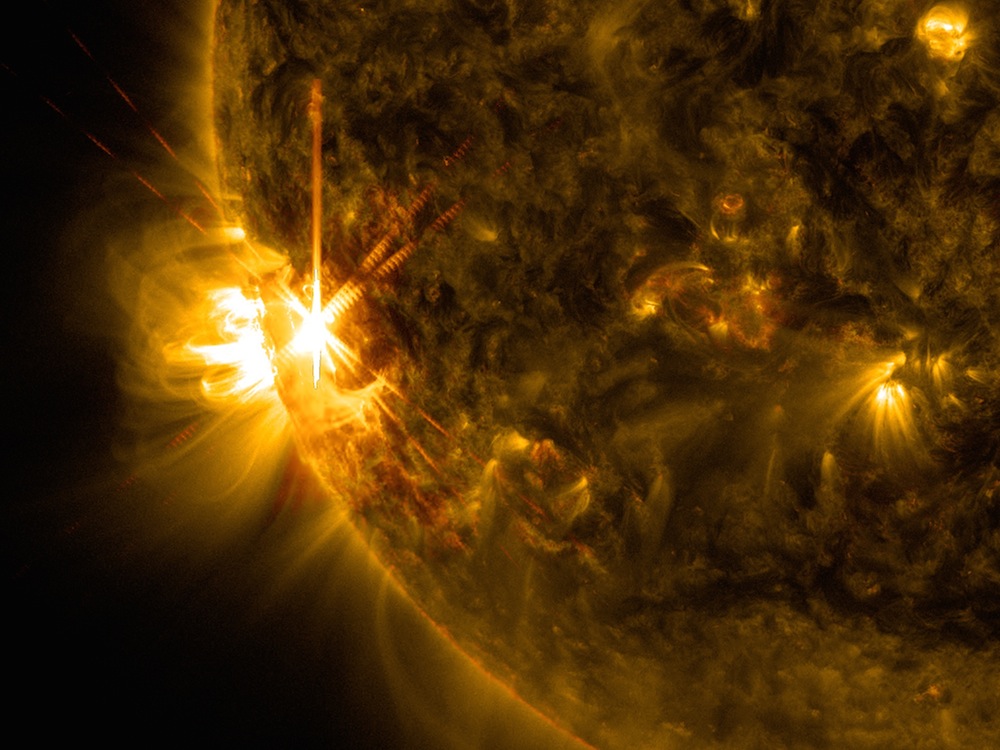Intense Solar Storm Could Hit Earth on Friday the 13th

The sun has unleashed three powerful solar flares over the past two days, and the effects of these eruptions could hit Earth this Friday the 13th — but don't worry, space weather reports show there's no cause for alarm.
The three solar bursts were all X-class flares — the most intense type of solar flare that is 10,000 times as powerful as normal background flares from the sun. The most recent flare was an X1.0 that peaked at 5:06 a.m. EDT (0906 GMT) yesterday (June 11). Two other solar bursts — one X2.2 flare (twice as powerful as yesterday’s) and an X1.5 flare (1.5 times as powerful as yesterday’s) — occurred Tuesday. All three solar tempests erupted from the left side of the sun, NASA officials said in a statement.
Solar flares are powerful bursts of radiation that are unleashed from the sun and speed out into space. They can sometimes produce waves of plasma and charged particles, called coronal mass ejections (CMEs). When aimed directly at Earth, CMEs can trigger geomagnetic storms and knock out communications and power grids on Earth. So far, scientists have not observed a CME associated with this morning's flare, but yesterday's flares produced a CME that could hit Earth on Friday — Friday the 13th. [The Surprising Origins of 9 Common Superstitions]
The fallout from the first two flares is expected to deal Earth a glancing blow, according to Spaceweather.com, but the CME could still create polar geomagnetic storms. Geomagnetic storms occur when solar particles interact with Earth's magnetic field.
A particularly powerful storm can create geomagnetic currents that interrupt power grids and throw off magnetic compasses, scientists have said. The storms can also produce auroras, the beautiful displays known as the Northern Lights. A powerful storm can supercharge auroras outside their normal latitude ranges, with some spectacular displays visible as far south as Texas.
Tuesday's solar flares caused a radio blackout that blocked all high-frequency radio communication on the sunlit side of Earth for about an hour, according to the U.S. Space Weather Prediction Center (SWPC), which is based in Boulder, Colorado. Yesterday's solar flare produced the same effect.
If the geomagnetic storm forecasted for Friday hits, it will likely only produce a G1 storm, the least intense type. Therefore, it's unlikely that communication instruments will be disrupted, and space weather experts are not forecasting any unusual aurora displays, SWPC officials said.
Sign up for the Live Science daily newsletter now
Get the world’s most fascinating discoveries delivered straight to your inbox.
As the sun rotates, it could shoot off additional flares that could end up pointing more directly at Earth, according to Spaceweather.com.
Strong flares and CMEs can also be hazardous to astronauts aboard the International Space Station and disrupt satellites in orbit around the planet.
Follow Kelly Dickerson on Twitter. Follow us @livescience, Facebook & Google+. Original article on Live Science.










